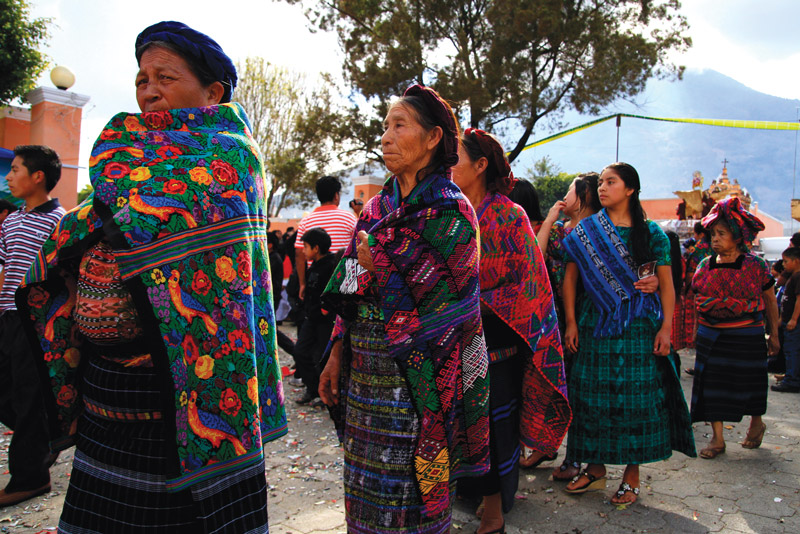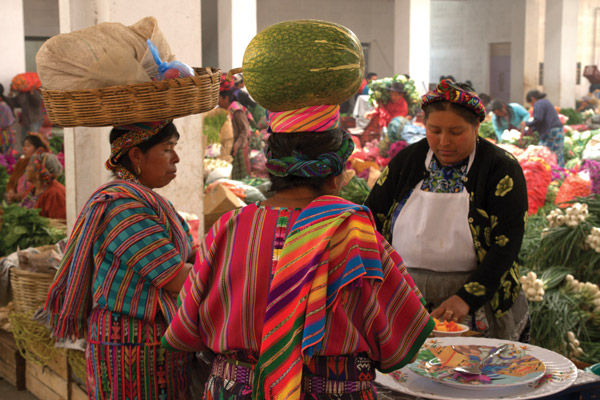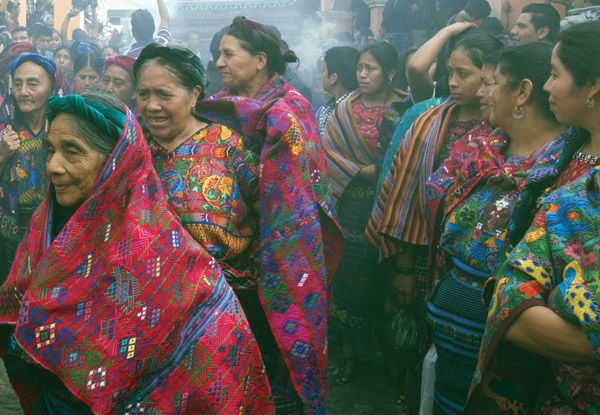Fashion Weeks in Guatemala
Haute couture designers boast of their Fashion Weeks held in many great cities. Designers, buyers, journalists gather for each city’s displays, especially crowded at the Big Four shows in Paris, London, Milan, New York.
Starting with department show fashion walks a century ago, growing in mid-century to global fashion events eight times a year, Fashion Weeks are vitally important for the industry.
Every Guatemalan town has its own Fashion Week, held not for fall and spring collections, or for summer resort and winter elegance, but for business at the municipal marketplace 50 times a year.
These are no modern events. Mesoamerican Fashion Weeks began centuries earlier than the Big Four shows, starting in the Highlands far before the Conquest.
Market Day in every town brings out ladies in fine weavings, Kaqchiquel brocades, K’iche blues, reds, gold huipiles, blouses with pre-Columbian symbols and designs. The Guatemalan Highland tradition is one town, one color, one design. No more.
As in the Big Four Fashion Weeks, the Guatemalan weekly fashion shows today mix varied colors, different figures, new patterns in weavings, picked up from neighbors’ work and copied by the weavers for wear at their town’s market day.
In the trading town of Chichicastenango, twice a week—except a pause for two holidays a year—Mashenos welcome Maya artisans from throughout the Highlands to present an astoundingly sensuous display of color that fills the town square and spills into side streets and an indoor hall.
Chichi’s Fashion Week on Thursdays and Sundays is a kaleidoscope of brilliant colors and varied designs, weavings and flowers and masks and vegetables carefully stacked in the sunshine. Tourists come to see and to buy, both local families walking from neighboring villages and those flying in from other countries, all jostling tightly together in the bright sunshine.
It’s a sensory overload, not only the brilliant sights but also the smells. Incense from the worshippers on the pre-Christian steps of Santo Tomás, coffee and chocolate on sale, chickens and produce and bubbling stews and butchered meats.
And of course the sounds, a gentle pase adelante welcome, a “you buy from me, mister?” and the murmur of bargains being struck.
REVUE article by Ken Veronda photos: Willy Posadas


